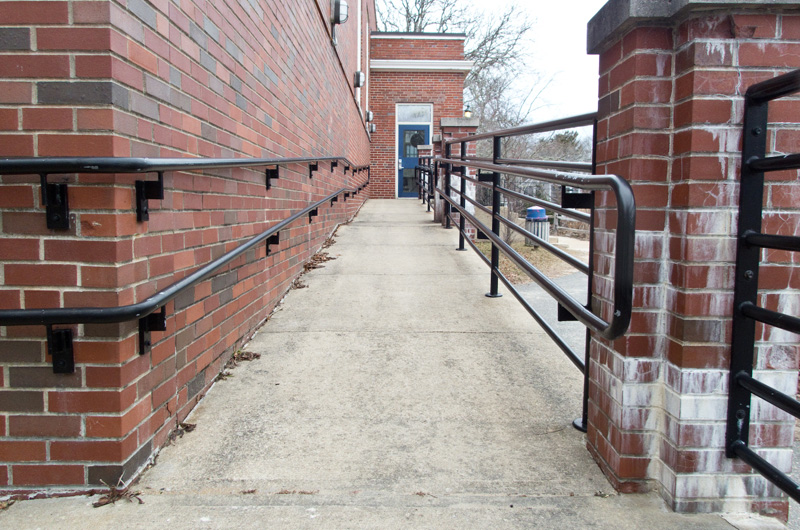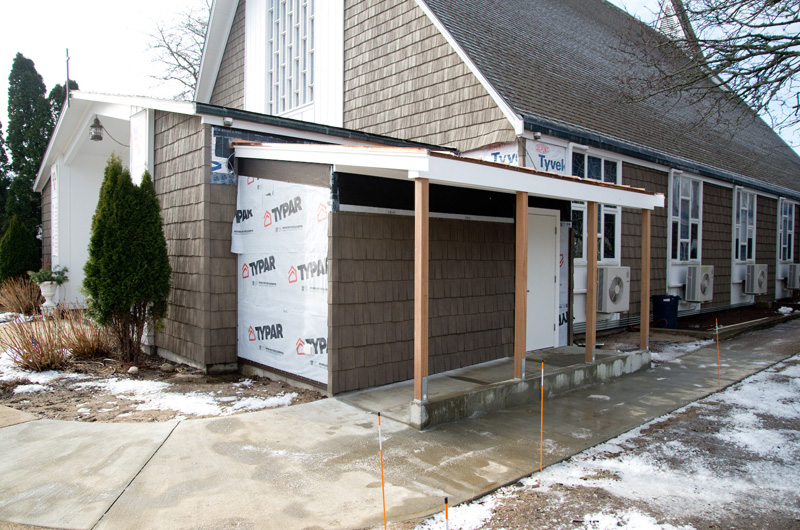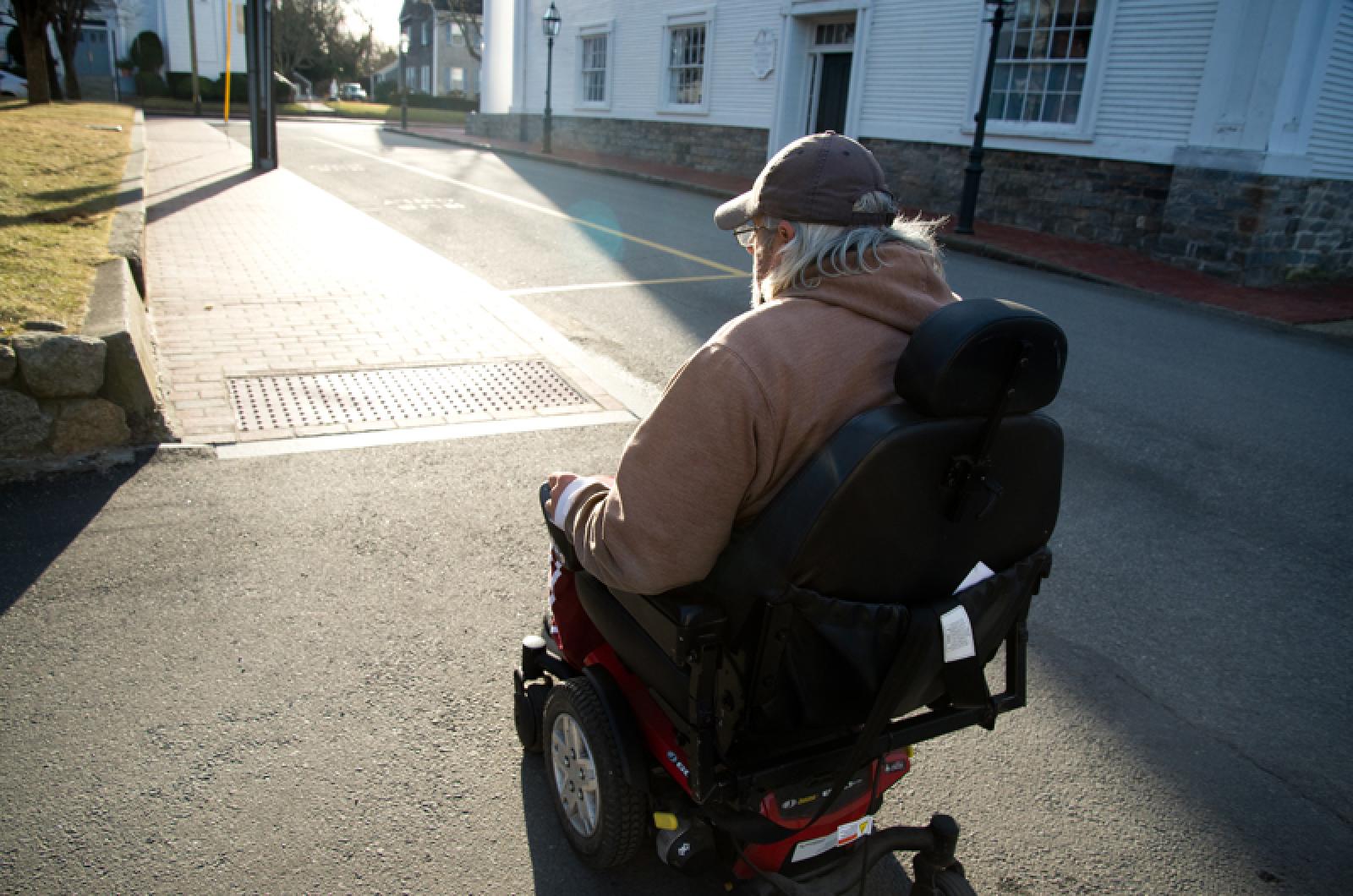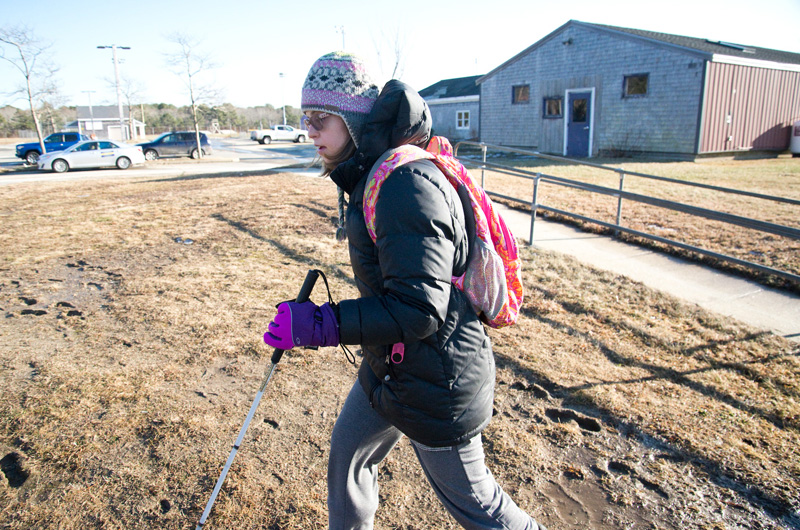Celeste Ewing keeps a busy schedule. Four days a week, the Vineyard native volunteers as an office assistant at the Martha’s Vineyard Regional High School, where she graduated from the special education program in 2008.
On three of those days, she goes on to a paid after-school shift at the YMCA youth center, Alex’s Place. She also is on a swim team at the Y and when weather permits, she loves to ride at up-Island horse farms. “I go horseback riding every Wednesday and Saturday,” said Ms. Ewing, 27, who spoke with the Gazette one morning last week at her mother’s home in Oak Bluffs. She pays for her riding lessons with the money she earns at Alex’s Place, she said.
Ms. Ewing has Down syndrome and visual impairment. Getting to West Tisbury for a horseback lesson requires her to catch a round-trip ride, usually with her father or mother, a family friend or the VTA’s door-to-door Lift service, which costs $2 per town for each trip and must be ordered the day before.
The Lift can be a social opportunity as well. “I meet friends along the way,” Ms. Ewing said.
But there are times, particularly in stormy weather and on dark winter afternoons, when Ms. Ewing’s mother, Chris Ewing, has to call on the Lift or a friend just to take her daughter across the street.
Their home in Old Schoolhouse Village is almost directly across the Edgartown-Vineyard Haven Road from the high school, with a painted crosswalk that’s further marked by a mid-street sign — specifically to indicate, Ms. Ewing said, that “someone is walking here with special needs.”
Yet even in clear daylight, wearing bright-colored clothing, looking both ways and carrying a long white walking stick, Ms. Ewing has had close calls while making her way across to her volunteer job at the high school.
“It can be a little treacherous,” said her father, Colin Ewing. “People zip by there.” Mr. Ewing himself, watching in horror from several cars back, once saw a driver nearly fail to stop for his daughter in the crosswalk before braking at the last minute, he recalled.
“I’m sorry, Daddy,” Ms. Ewing said at the memory. “You did everything right,” he reassured her.
Apart from the tricky crossing, Ms. Ewing had no complaints about her life on the Vineyard. She spends August at Camp Jabberwocky and is getting ready for her first skiing trip with camp friends and families in March. After work, she’d rather surf Facebook on her iPad than watch TV or go out. And with a large circle of Island friends and family, along with the Lift, she can generally get where she needs to be during the day.
Michael Amaral, 59, a former taxi operator who has used a wheelchair since suffering a stroke 14 years ago, takes the VTA’s regularly scheduled, lift-equipped buses to get around the Island. He also works for the transportation agency half the year, selling tickets at bus hubs seven days a week.
While the VTA itself is accessible, once off the bus Mr. Amaral faces barriers on many sides. Rolling down Edgartown’s Main street this week, he pointed out a restaurant that can only seat wheelchairs outside, shops and offices with insurmountable steps and a sidewalk blocked by construction.
“I just deal with it,” he said.

According to building inspector Leonard Jason, the Americans with Disabilities Act — ADA, the 1990 federal civil rights legislation that prohibits public discrimination against people with disabilities — only requires businesses to become wheelchair-accessible if they renovate the entrances.
Given the Island’s seasonal economy, Mr. Amaral said, he understands why business owners don’t update their buildings to make them more accessible to customers with disabilities.
“They’re all great people, but in the end they’re all trying to make money,” he said. “It’s just about money.”
Money was no obstacle to parishioners at St. Augustine’s Catholic Church in Vineyard Haven, where a call for private donations last summer raised more than $77,000 for a new wheelchair lift at the Island’s only year-round Catholic house of worship.
Churches are exempt from ADA requirements. But St. Augustine’s multi-purpose area, used for community gatherings, classes and the Houses of Grace shelter, is located in the basement down a steep flight of steps.
“At our Christmas tea, there was a family that had to carry their daughter up and down the stairs, while someone else carried the wheelchair,” said parishioner Marie Mercer. “Something needed to be done.”
It took just a few months to raise all the money from collections at St. Augustine and the parish’s summer churches, St. Elizabeth’s in Edgartown and Our Lady Star of the Sea in Oak Bluffs: “We started in June and we had the amount in September,” Ms. Mercer said. “Everybody was very supportive, financially and emotionally.”

The new lift is due to be installed this month.
How many Islanders are living with disabilities? It’s impossible to know at this point, said Beth Wike, program director for disability services at Martha’s Vineyard Community Services.
“That information is not there,” Ms. Wike said. While various Island and regional organizations focus on different segments of the population, such as autistic children or adults with mental health issues, “there is not one place somebody can go for the latest needs assessment for people with disabilities on Martha’s Vineyard,” she said.
But these disparate groups are now coming together in a new coalition, formed to advocate across the spectrum of disabilities on the Island. A top task for the Island Disability Coalition this year will be to gather data that will draw a clearer picture of the Vineyard’s population with disabilities, so the group can determine what’s needed here, Ms. Wike said
“The scope is large. There are gaps in services and resources, across ages and across types of disability,” she told the Gazette. “There’s such a range, and there’s such diversity.”
First in a series about people living with disabilities.









Comments (5)
Comments
Comment policy »